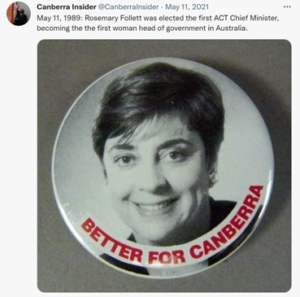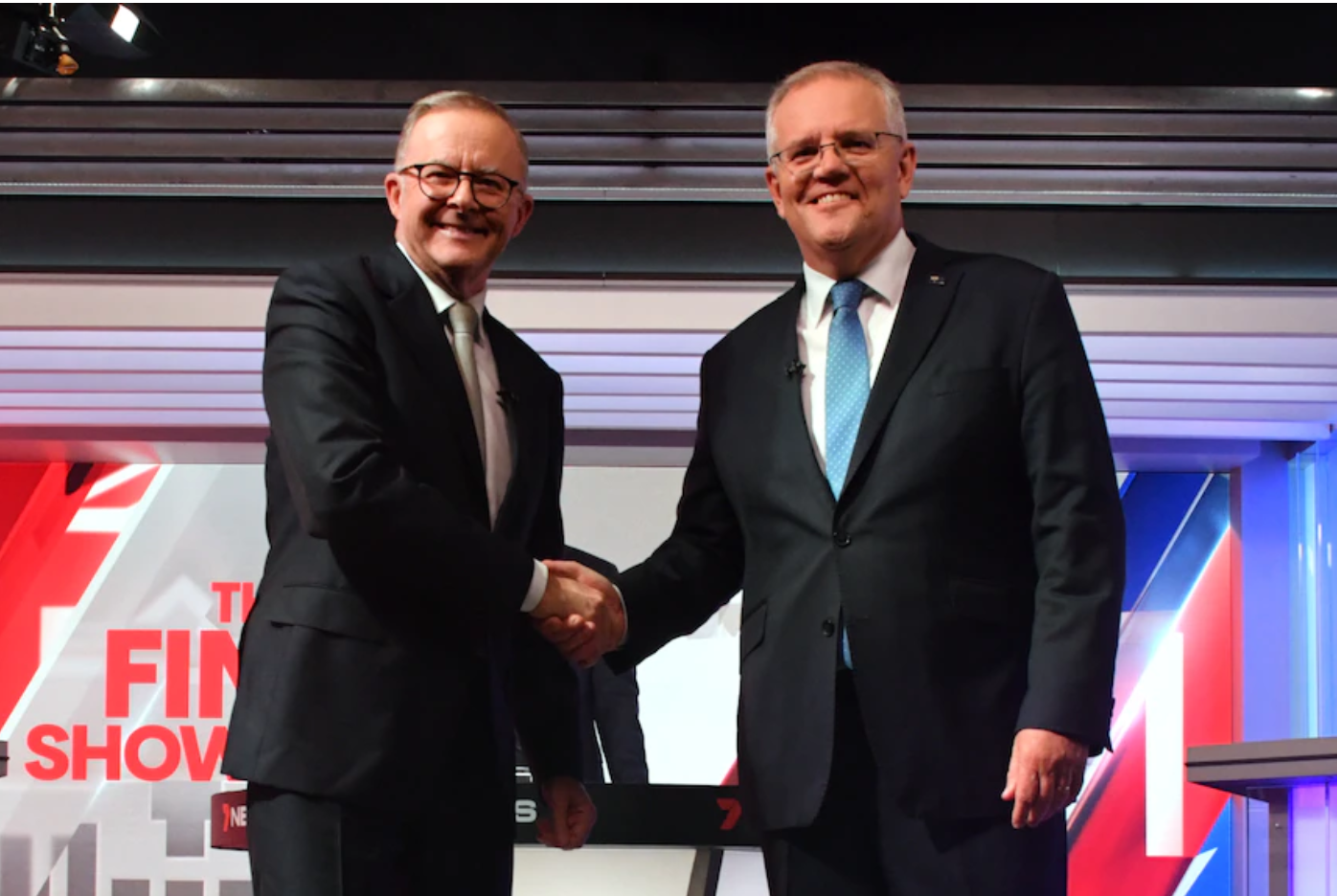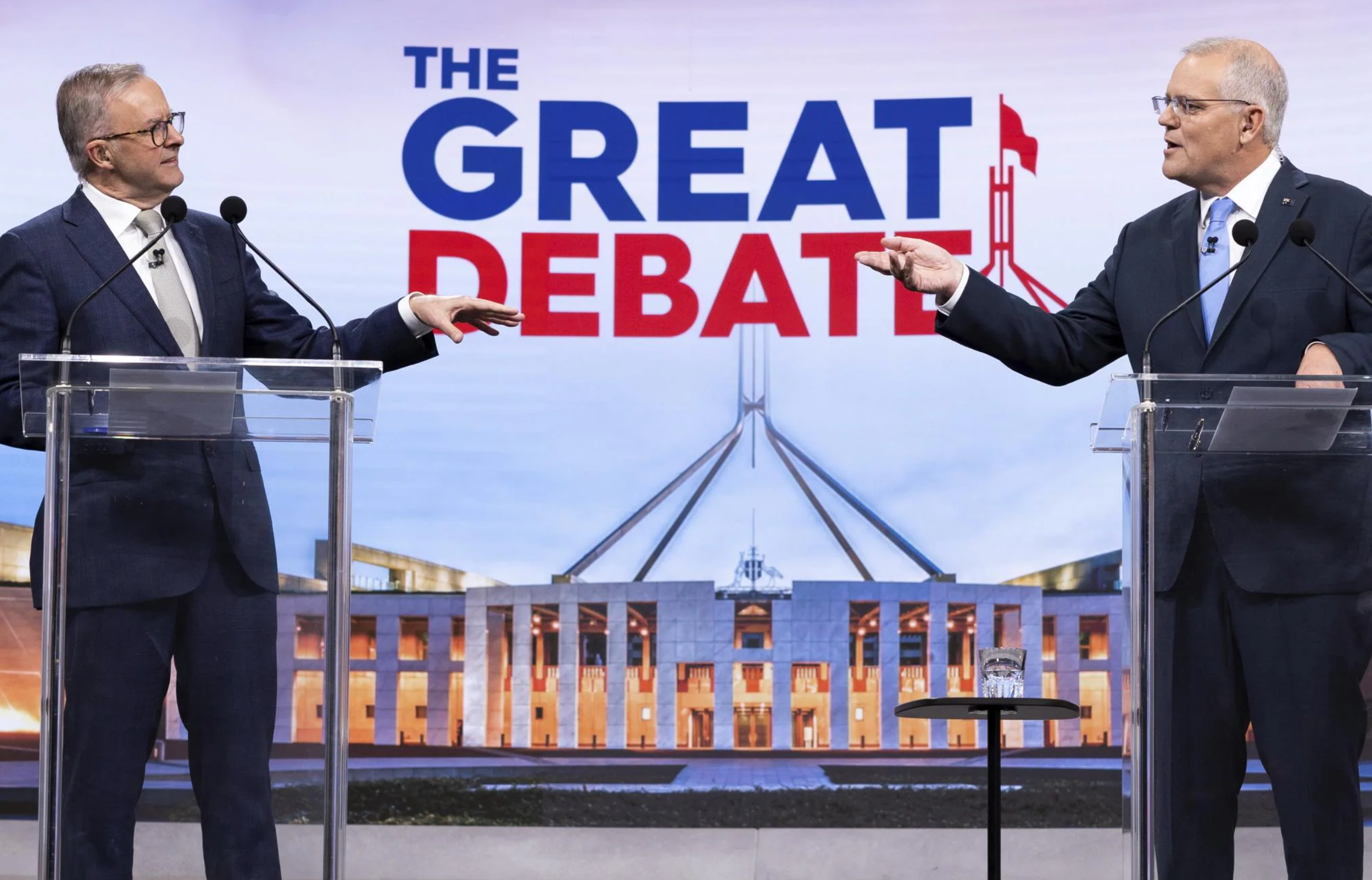Election Week 5
And they’re off and racing – with the first 2 million votes already cast, the opposition has increased its winning margins in Newspoll and the Australian Financial Review’s Ipsos polls.
With the final week well underway, we see a tight competition between Prime Minister the Hon Scott Morrison MP and alternative PM the Hon Antony Albanese MP.
With days left, the team at Nexus will discuss last week in review the current state of the campaign, the battles in the States and a Nexus Insight to round off the week!
Week In Review
Last week, away from federal politics, the NT and WA followed Victoria’s state budget announcement from last week.
Northern Territory Change: On Tuesday, the Northern Territory announced their 2022-23 State Budget, which shows the territory returning to surplus earlier than previously forecast. The NT’s government announced new operational commitments of $663 million over the forward estimates period.
After unveiling his third budget, NT Chief Minister Michael Gunner revealed a surprise retirement and was replaced byNatasha Fyles a former NT Health Minister. On Friday she commented:
“I know it’s a tough job, but I’m pretty tough. I’m Territory tough. There’ll be easy days, there’ll be hard days.WA State Budget: On Thursday, Western Australia announced their State Budget, with significant announcements focusing on reducing cost-of-living, boosting the public health system, and pandemic response. The state is experiencing a record surplus fed by mining royalties and improved tax receipts. Funding for health infrastructure will come to $1.6 billion over four years, and the government announced a $400 credit for more than one million households to pay their power bills.
International Developments: Internationally, U.S. President Joe Biden signed a modern-day Lend-Lease Act on Monday, 81 years after the original version helped lead the way into World War II. Following the Foreign Affairs Debate between the Hon Marise Payne MP and the Hon Penny Wong MP on Friday, America’s announcements will undoubtedly impact Australian foreign policy in this complex period. This decision has effectively thrust the United States even deeper into the conflict in Ukraine. The Lend-Lease Act will waive time-consuming requirements to speed arms to Ukraine; President Biden has further proposed $33 billion more in military and humanitarian aid, a package that congressional Democrats plan to increase by another $7 billion.
Campaign In Review
Last week saw the third leader debate between Prime Minister the Hon Scott Morrison MP and opposition leader the Hon Anthony Albanese MP. Both candidates went head-to-head for the last time before the federal election, with a smoother debate than the previous attempt. The discussion opened on increasing wages, with the opposition leader clarifying his position on increased minimum wage. Hon Anthony Albanese MP has been declared the winner of Wednesday’s debate by most observers
The week concluded with Prime Minister, the Hon Scott Morrison MP, holding the Liberal Party “official” campaign launch in Brisbane. It is the first time the Coalition has launched its federal election campaign in Queensland since The Hon Tony Abbott almost a decade ago. Hon Scott Morrison MP stated he would use the launch to highlight the state’s importance in the coming years should Coalition be re-elected.
Albo vs. ScoMo:
SCOMO
The Hon Scott Morrison MP has been Prime Minister of Australia since August 2018. Mr Morrison entered office after serving in Cabinet, Minister for Immigration and Border Protection, Minister for Social Services and Treasurer.
Mr Morrison grew up in suburban Sydney, where his father was a policeman and, later, the local mayor. Mr Morrison’s first start in politics was handing out how-to-vote cards for his dad on Waverley Municipal Council. Mr Morrison’s focus has always been on family, with his wife Jenny, whom he began dating when they were just 16. Mr Morrison and Jenny now have two daughters together.
Mr Morrison is vocal about his faith, an important aspect of his life, as shown through his consideration to study theology in Canada, but he entered the workforce instead. After time at the Property Council of Australia, and a period as State Director of the Liberal Party, he became general manager of the Tourism Council of Australia.
In 2007 Mr Morrison was chosen for the southern Sydney seat of Cook, entering government on the frontbench as Immigration Minister. As Social Services Minister, he introduced the ‘no jab, no pay’ for child-care payments, helping to ensure childhood vaccination rates among five-year-olds increased. As Treasurer, his achievements included reducing taxes and ensuring multinationals pay their fair share of tax.
As Prime Minister, he has faced challenges, including a pandemic and the most significant global economic shock since the Great Depression. Australia’s recovery has led the world. Australia has one of the lowest fatality rates and highest vaccination rates.
Mr Morrison’s policy focuses on increasing economic growth, employment rates, and tax relief. He also has a strong focus on infrastructure, modern manufacturing, a more assertive defence policy and, like his counterpart – re-invigorating Australia’s health system post-pandemic.
ALBO
Opposition leader, the Hon Anthony Albanese MP, seems to be rising in popularity as Australia’s preferred Prime Minister. Data from this election Newspoll shows a moderate lead held by the opposition on a two-party preferred basis.
If these polls indicate the broader population’s intentions for the next federal election, it is important to understand the ideals and motivations of our potential next Prime Minister.
Mr Anthony Albanese was born in the inner-Sydney suburb Camperdown and raised by his single mother, Maryanne Ellery. Mr Albanese’s mother is the most influential person in his life and helped nature his passion for fairness and social justice. Mr Albanese lived in public housing throughout his childhood and experienced firsthand the need for secure housing and a stable living environment.
Mr Albanese was the first person in his family to graduate high school and the first to attend university. He graduated from the University of Sydney with a Bachelor of Economics. During his time here, Mr Albanese started to rise as a critical player in the left faction of the Labor party and was a member of the Students’ Representative Council. With the backing of the Left, Mr Albanese became Assistant General Secretary of the New South Wales branch of the Labor Party in 1989. After six years, he left to become the Senior Policy Adviser to former NSW Premier, the Hon Bob Carr MP.
Elected to the House of Representatives for Grayndler in 1996, Mr Albanese has maintained public infrastructure funding, guaranteed minimum income (GMI) and native title as key areas of interest for his political career. He was promoted to the opposition Shadow Cabinet in 2001 in the portfolio for Ageing and Seniors. His rise in status within the Labor party became evident when Mr Albanese replaced the Hon Julia Gillard MP AC as the Manager of Opposition Business in the House when the Hon Kevin Rudd MP AC became the party leader in 2006.
When Mr Rudd defeated Ms Gillard in the final leadership contest of June 2013, Mr Albanese was elected as Deputy Leader of the Labor Party and became Deputy Prime Minister.
Throughout this campaign, Mr Albanese’s key focuses have remained on public infrastructure, domestic manufacturing, Women’s rights, and re-invigorating the health system after the pandemic. Mr Albanese’s personal life and past have undoubtedly influenced his desire to improve social housing and the overall living standard of Australians.
Nexus Insight: How long between an election and the swearing-in of Ministers?
As the close election draws nearer, the nation wonders, ‘when does our new government start?’.
The Nexus team has compiled the last four prime ministers’ election timelines to inform an idea of what’s to come after Saturday 21st May.
Election 2007: November 24th (Change of Government)
- 9 days between the election and the swearing-in of Hon Kevin Rudd.
- 80 days between the election and the first sitting of Parliament.
- Election 2010*: August 21 (Return of Government) 24 days between the election and the swearing-in of Hon Julia Gillard.
- 14 days between the election and the first sitting of Parliament.
Election 2013: September 7th (Change of Government)
- 11 days between the election and the swearing-in of Hon Tony Abbott.
- 66 days between the election and the first sitting of Parliament.
Election 2016*: July 2nd (Return of Government)
- 17 days between the election and the swearing-in of Hon Malcolm Turnbull.
- 59 days between the election and the first sitting of Parliament.
Election 2019: May 18th (Return of Government)
- 11 days between the election and the swearing-in of Hon Scott Morrison MP.
- 34 days between the election and the first sitting of Parliament.
Election Averages (Since 2007):
- Swearing In Averages: (Change 10 Days / Return 17 Days)
- Sitting Average: (Change 73 Days / Return 35 Days)
Tweet of the Week:

Latest posts by Lucy Jamieson Beath (see all)
- Opposition Leader Peter Dutton’s Budget in Reply - October 27, 2022
- Solid, Sensible and Suitable for the times – ‘Building a Better Future’ Budget - October 25, 2022
- Welcome Back Parliament - July 29, 2022



